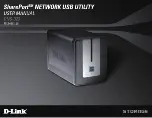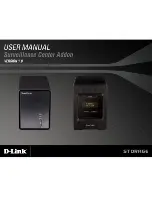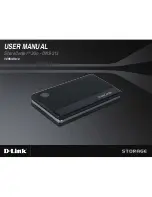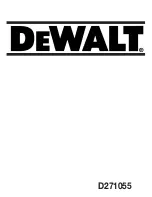
Barracuda 18XL Product Manual, Rev. A
17
The following conditions are considered DST failure conditions:
• Persistent seek error after retries are exhausted
• Persistent track-follow error after retries are exhausted
• Persistent read error after retries are exhausted
• Persistent write error after retries are exhausted.
Recovered errors will not be reported as diagnostic failures.
5.2.8.2
Implementation
This section provides all of the information necessary to implement the DST function on this drive.
5.2.8.2.1
State of the drive prior to testing
The host is responsible for spinning the drive before issuing the Send Diagnostic command. While not techni-
cally part of DST, a persistent Not Ready condition also qualifies the drive to be returned to Seagate as a failed
drive.
A Drive Not Ready condition is reported by the drive under the following conditions:
• Motor will not spin
• Motor will not lock to speed
• Servo will not lock on track
• Drive cannot read configuration tables from the disc
A Drive Not Ready will cause the drive to return a check condition with a sense code of 02, an error code of 04,
and an ASQC of 00, 01, 02, 03, or 04.
5.2.8.2.2
Invoking DST
To invoke DST, submit the Send Diagnostic command with the appropriate Function Code (001b for the short
test or 010b for the extended test) in bytes 1, bits 5, 6, and 7. Refer to the SCSI Interface Product Manual, Vol-
ume 2, part number 75789509, for additional information about invoking DST.
5.2.8.2.3
Check condition
Fault conditions are reported using one of two mechanisms. The two mechanisms are mutually exclusive—a
failure reported by a check condition will not update the log, and a failed report in the log will not produce a
check condition.
1.
Check Condition status is reported in any of the following cases:
• Command is not valid (sense data xx xx xx),
• Drive is not ready (sense data 02, 04, [ASQC: 00, 01, 02, 03, or 04], and
• The drive is not able to update the log (sense data xx xx xx).
2.
Failure Report through the Log Sense command.
5.2.8.2.4
Immediate and non-immediate modes
The host can specify when the drive returns status. Status can be returned at the conclusion of the command
(non-immediate mode) or can be returned immediately (immediate mode). In immediate mode, the nexus com-
pletes with good status immediately after the command has been validated and the log has been updated. In
non-immediate mode, the drive will disconnect from the bus and reconnect at the conclusion of the command.
5.2.8.2.5
Short and extended tests
DST has two testing options—short and extended. These testing options are described in the following two
subsections.
Short test (Function Code: 001b)
The purpose of the short test is to provide a time-limited test that tests as much of the drive as possible within
120 seconds. The short test does not scan the entire media surface, but does some fundamental tests and
scans portions of the media. A complete read/verify scan is not performed and only factual failures will report a
fault condition. This option provides a quick confidence test of the drive. Future revisions of the DST algorithms
Содержание Barracuda 18XL ST318416N
Страница 2: ......
Страница 6: ......
Страница 10: ......
Страница 12: ...2 Barracuda 18XL Product Manual Rev A...
Страница 30: ...20 Barracuda 18XL Product Manual Rev A...
Страница 44: ...34 Barracuda 18XL Product Manual Rev A...
Страница 98: ...88 Barracuda 18XL Product Manual Rev A...
Страница 102: ...92 Barracuda 18XL Product Manual Rev A...
Страница 109: ......
















































